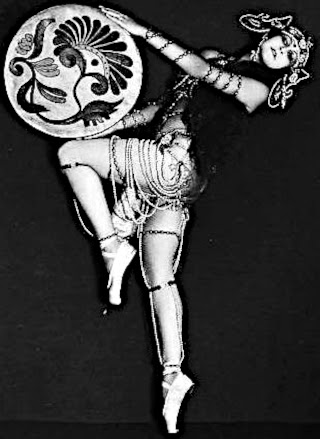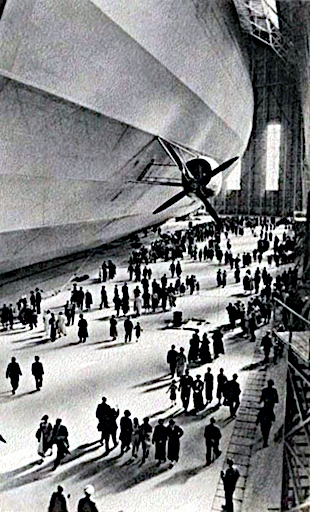“So that the question is: Would there be any advantage, at this particular stage, in going back to the gold standard? And the answer is: I don't think so, because we're acting as though we were there.
So I think central banking, I believe, has learned the dangers of fiat money, and I think, as a consequence of that, we've behaved as though there are, indeed, real reserves underneath the system."
Alan Greenspan, 20 July 2005
Yes that's right. The Fed is NOT printing money.
It is 'retiring Treasuries' and 'issuing Reserves.'
And everyone knows that Reserves are benign, if not almost meaningless accounting entities.
Banks just like to collect them. Like Pokémon cards.
So implies the AngryBear amongst others.
And Mark Dow shows that there is zero correlation between the Fed printing money and the money supply. And so 'deal with it.' Hey rube, you obviously don't understand the difference between 'liquidity' and 'credit.'
I thought it was cute that the study went back to 1986, long before the Fed had to resort to Quantitative Easing, and expanding its Balance Sheet as they are doing today.
And they are doing it on a continuing basis, and not as an unusual action with regard to secular and isolated liquidity problems. Unless you want to count chronic insolvency as a liquidity problem.
And the Fed purchases of Treasury debt at non-market prices is just dandy as long as it passes through the hot little hands of the likes of a friendly bank like JPM, who take their vig and then some.
And this chart shown below, printed courtesy of the St. Louis Fed, is just an illusion, so don't look at it. Seriously. Don't look at it. Knowledge is bad. As a reminder, there are two scales on that chart, and the Adjusted Monetary Base uses the lesser scale.
As a reminder:
"In economics, the monetary base (also base money, money base, high-powered money, reserve money), is defined as the sum of currency circulating in the public and commercial banks' reserves with the central bank."Hey, the Monetary Base includes reserves that the Banks are keeping safe at the central bank. And the monetary base is the foundation for that leveraged expansion of debt money that is characteristic of a fractional reserve banking system. What's up with that. Does the Fed need to get out the liquid paper and correct that?
Here is a link to 'Money Supply: A Primer."
I recall that not long ago, Alan Blinder suggested that the Fed might alter the interest it pays on Reserves in order to stimulate more lending. But he is just being a party pooper and doesn't understand banking. Or the difference between liquidity and credit.
"The nation's biggest banks have been nursed by the Federal Reserve way too long, former Federal Reserve Vice Chairman Alan S. Blinder said Thursday as he kicked off the tour for his new book, After The Music Stopped: The Financial Crisis, The Response and the Work Ahead.Yes I understand these are not 'excess' reserves which is an 'accounting designation' created by the Fed. It is the Fed that sets the aggregate level of reserve requirements, or the lack thereof, in its role of banking regulator. And it has quite a bit to say about the quality of the collateral that be used as reserves. Such as cash, aka liquidity to those ascending masters of finance. And as I recall they set margin requirements on the equity markets. But perhaps they no longer do that.
The Federal Reserve, says Blinder, should stop paying interest to banks for their overnight deposits and should move to charge them for parking money. He says if the Fed set negative interest rates for overnight deposits – in effect charging a fee – banks would have to figure out better ways to make money and one obvious alternative would be to lend more to customers."
But this statement by Blinder somewhat 'blows a big hole' in the arguments of those who occasionally come out and lecture us that when the Fed 'creates money' (or liquidity if you prefer) and buys Treasury and Agency Debt from the Banks at non-market rates, it is not really creating money. It is a benignly useless action. It simply gives the banks 'cheap liquidity' that they can choose to use as they wish. I wish they would buy some useless paper from me at non-market rates. I accept all major forms of payment.
The Banks hold this liquidity, and use it to prop up their zombie Balance Sheets. I don't think the virtual dollars are sequentially numbered and marked. So they may also use it, and more properly the vig obtained therein, and pay themselves bonuses from their leveraged up gambling. Oh I forgot, Dodd-Frank changed that. Except for 'hedging.'
"While banks cannot control the overall level of excess reserves, there are a several ways they can reduce the level of excess reserves on their own individual balance sheets. They can lend excess reserves to other banks in the federal funds market, they can lend them to consumers or businesses, or they can purchase securities. Each of these outlets has been constrained for various reasons since the recession."Keep in mind that my argument here is not the true nature of excess reserves, but rather, is the Fed 'printing money' by expanding its Balance Sheet.
Cleveland Fed, The Federal Reserve's Influence Over Excess Reserves
Normally the Fed does not have to print money. The members of the Federal Reserve Banks do that for themselves under their charters with the consent and oversight of the Fed, and subject to the prevailing capital requirements.
But when the real economy falters, as typified in the recent collapse and the continuing plunge of the velocity of money indicators, the Fed picks up the ball and prints money for the benefit of the economy. They use this to 'lower interest rates,' except in a liquidity trap which is like pushing a rope.
I think what some of these helpful pundits are trying to say is that the Fed is not 'printing money' so that it is becoming an inflationary problem. They are giving that 'money' to the Banks, and they hold it for safekeeping. And for their gambling stash. And for credit cards and food stamp distributions and other fee generating activities. And for loans to pay dividends, and fund share buybacks, and the occasional industrial activity.
And among other things it involves the payments on excess reserves that they are giving to the Banks to sit on that money. And the gaming of the financial markets to which they turn a blind eye. And the enormous abuses in the financial system which have still not been reformed.
And keep in mind that the purpose of my writing this is not to argue about 'excess reserves' but rather with regard to the question of whether the Fed is 'printing money.' Yes they are. The quibble is what is being done with that money, which the Fed is providing in its function as the lender of last resort by buying Treasuries, and sometimes dodgy paper at non-market prices, and providing a subsidy to the Banks in the process.
That the Banks are NOT getting that money to the real economy in sufficient amounts is another matter perhaps. There is a difference between liquidity and risk.
And I think that there is a strong indication that the interest rate policy mechanism of the Fed has broken down because Banks, or at least those holding those Reserves, are not making the bulk of their profits from conventional lending any longer.
They are making their profits through various forms of private investment and the many permutations of prop trading. And their lending preferences tend towards further financialization of the economy. This is the downside of the lack of serious reform.
Click on the subject link 'Excess Reserves' below for more on these Tales from the Vienna Woods (the play, not the waltz) from our financial sophisticates, and sophists, who like to argue what the meaning of is, is. And there are some related articles and essays at the end that might be useful.
Or just start by clicking here.
Foreign Banks Hold Most Excess Reserves at the Fed - WSJ
Why Are Banks Holding So Many Excess Reserves - NY Fed






































